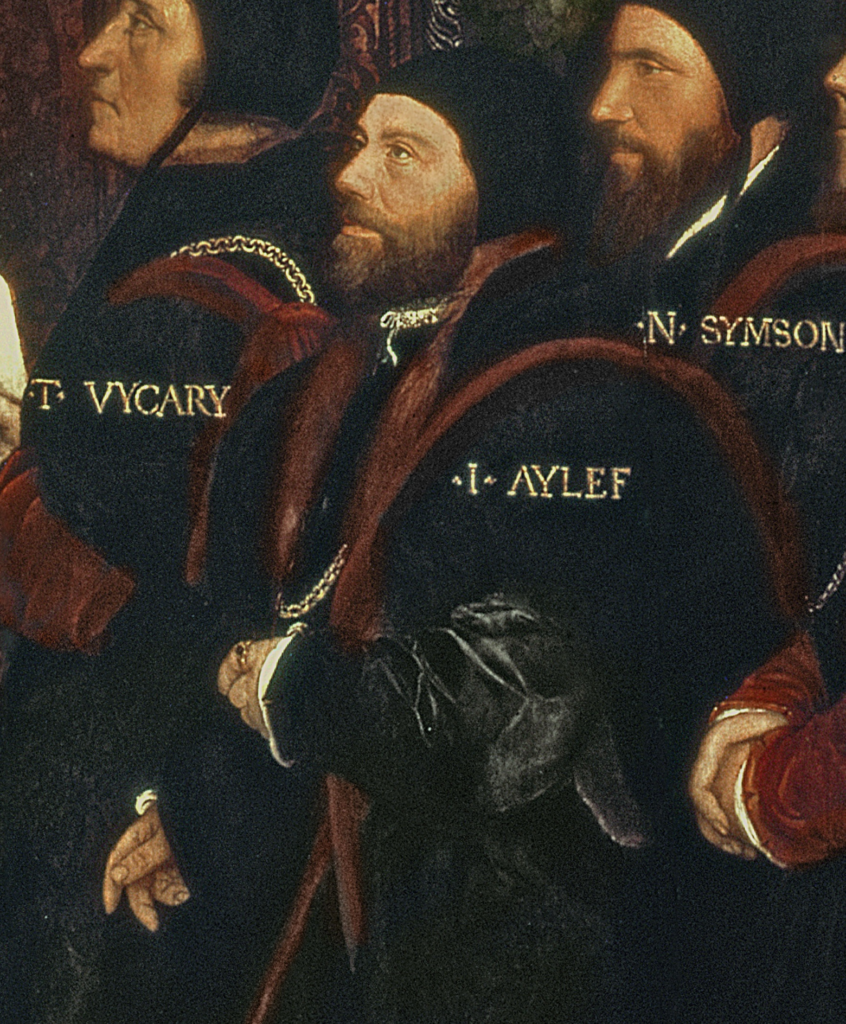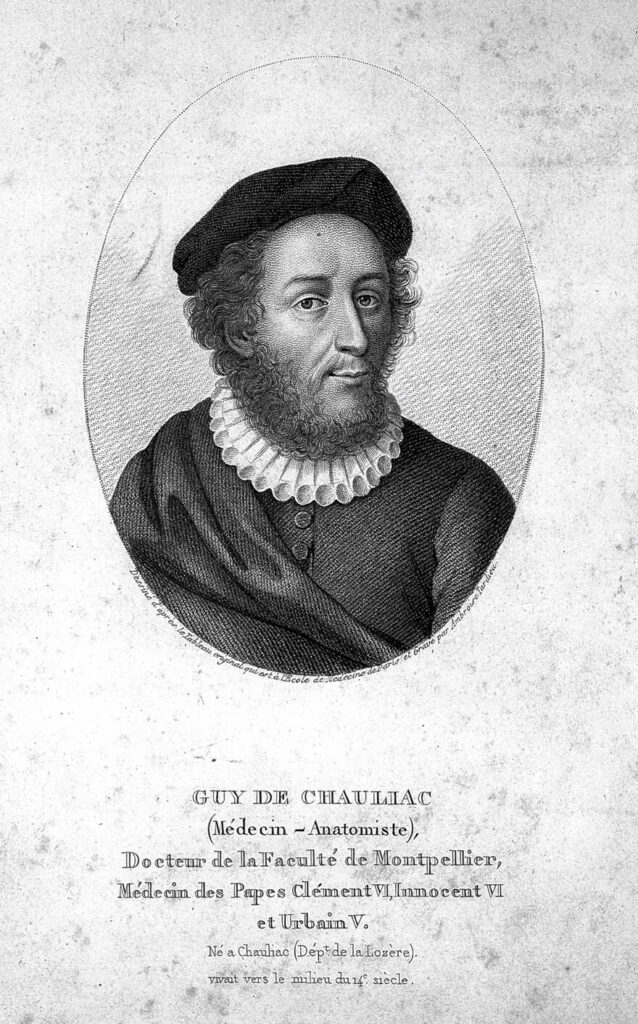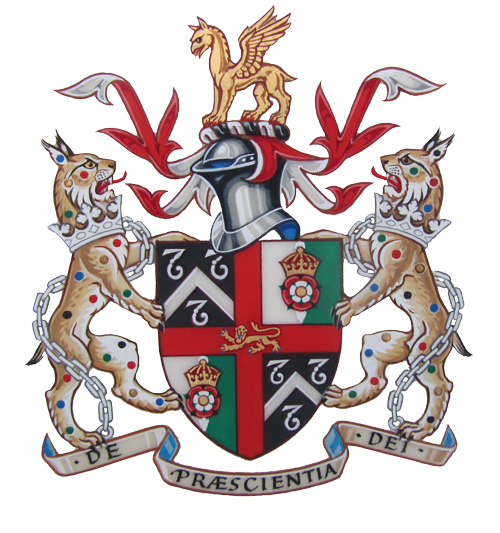On this day in 1556, Henry Machyn recorded in his diary the funeral of Sir John Ayliffe (or Aylef):
"The xx of October was bered ser John Olyff knyght and altherman, and sum-tym he was surganttunto kyng Henry the viijth, and after he was shreyff of London; and he had levyd tylle the next yere he had byn mayre, for he tornyd from the Surgens unto the Grosers; and bered at sant Myghelles in Bassynghall, with a harold of armes bayryng ys cott armur, and with a standard and a pennon of armes, and iiij baners of emages, and ij grett whytt branchys, and iiij grett tapurs and . . . . . dosen of torchys; and mony powre men had gownes; and with a elmett, targat, and sword; and the crest a crowne and a holyfftre standyng with-in the crowne."
Ayliffe, born around 1500 in Greenwich, was elected Master of the Company in 1538, by which time he was Surgeon to Henry VIII. In 1541 he was rewarded for his services to the King with the grant of the manor of Grittenham in Wiltshire, part of the lands of the Abbey of Malmesbury. Henry also bequeathed to him 100 marks in his will. Ayliffe served the office of Sheriff of the City 1548–9, and elected Alderman the following year. Having translated to the Grocers’ Company, Ayliffe's election as Lord Mayor was prevented by his death.

Ayliffe’s will, dated 26th September, 1556 and proved 24th December, 1556 contained bequests to fellow surgeons and to the Company. To Thomas Vicary, fellow surgeon to the King and adjacent figure in the Company’s Holbein, he gave £5. And “to the companye of barbors for a repaste at my buryall fyve poundꝭ and to the beddell of the same company of barbors tenne shillings.”
To George Vaughan (Master 1569) was given “My boke of Guydo and all my Instrumentꝭ Boxes and other that dothe in any wise belonge to Surgerie.”
Ayliffe’s ‘Guydo’ likely refers to ‘Chirurgia Magna’ by 14th century surgeon and physician to Pope Clement VI Guigo de Cauliaco or Guy de Chauliac, a standard medical textbook for several centuries after it was completed in Latin at Montpellier in 1363. A 1537 edition is held in the Company’s Library.
Ayliffe was buried in the Church of St. Michael Bassishaw (destroyed in the Great Fire, rebuilt by Wren and demolished in 1900), where his marble tomb had the following inscription to his memory:
A Knight here lyeth dead;
A Knight and eke a Surgeon such
As England seld hath bred.
For which so soveraigne Gift of God
Wherein he did excell,
King Henry VIII call’d him to Court,
Who lov’d him dearly well.
God gave the Gift, the King gave Goods,
The Gift of God t’enhance;
Where God and such a Prince do joyne,
Such Man hath happy Chance.
King Edward for his service sake,
Bade him rise up a Knight,
A name of Praise and ever since
He, Sir John Ailiffe hight,
In London lived he than,
In Blackwell Hall the merchant chiefe
First Sheriffe, then Alderman.
The Hospitals bewaile his death
The Orphan children mone,
The chiefe Erector being dead
And Benefactor gone.
Dame Isabel who lived with him,
His faithful Wife and Mate,
With him (as dearest after death)
Doth not her Knight forsake
The Knight the 24of October.
Yeelded up his breath,
And she soon after followed
To live with him in death.

Further reading:
Chirurgia magna, or great surgery, by Guy de Chauliac, New York Academy of Medicine. Available to read online
